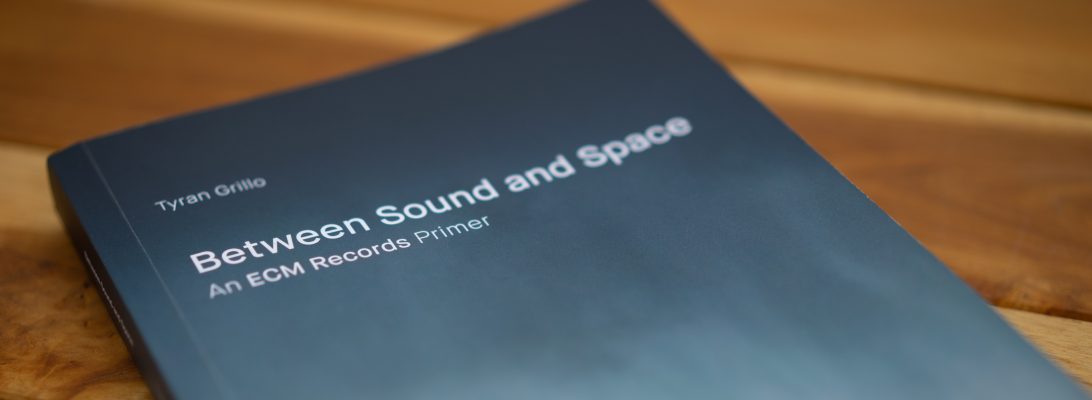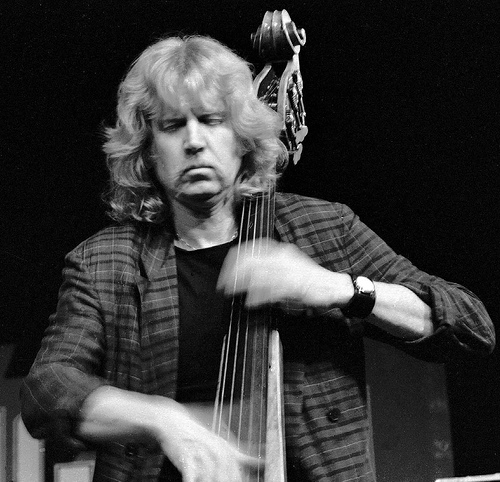Eberhard Weber
Résumé
Eberhard Weber electric double bass, keyboards
Jan Garbarek tenor and soprano saxophones, selje flute
Michael DiPasqua drums, percussion
Recorded in concert 1990-2007
Recording engineers: Walter Speckmann and Gert Rickmann-Wunderlich
Produced by Manfred Eicher
There’s a reason why songs on a CD are called “tracks.” Each takes us on a journey somewhere, and no jazz bassist sports the conductor’s hat in quite Eberhard Weber’s way. Over the course of 1000+ concerts with the Jan Garbarek Group, the German bassist/composer has for decades enthralled listeners with unimaginable pathways, all the while defining and redefining a sound for the ages. Each of those concerts featured a solo entr’acte, wherein fomented some of his most extraordinary ideas. Résumé consolidates a cohesive selection of these in a fresh program of eternal ideas. More than mere interludes, each is a marker of the respective location that titles it.
Weber devotees will recall his 1988 Orchestra (link), half of which placed him in a solo spotlight. If that memorable record gave early and lasting insight into his uncompromising ear for melody, then Résumé furthers the crucible’s purpose in boiling down to the essence of who he is. This is Weber in the flesh, in no way obscured by the spontaneous loops, forged in real time, that issue from his electronic paraphernalia. Aside from these ghostly selves, his is not truly solitary endeavor throughout, for he also has a sprinkling of help from drummer Michael DiPasqua and saxophonist Jan Garbarek, the latter also on the selje flute. The overtones of this Norwegian folk instrument add blush to the canvases of “Karlsruhe” and “Bath.” The first paints arco flight paths like the steps of cranes lingering in the scent of freshly harvested rice paddies. The second is angular and playful, and finds Weber tying his bow into an assortment of harmonic knots before darkening into a heavy drone.
Such contrasts can be found as much within tracks as between them, though nowhere more acutely than in “Liezen.” The program’s opener is a window into the heart of a man whose artistry is heart incarnate. Lush chords usher us down a gallery of warm emotions, its walls decorated by the vibrant palettes of wife Maja that grace so many of his past album covers. Swinging from delicate pizzicato branches, Weber strings more robust vines through a germinating landscape. Keyboards scatter like windblown blossoms as Weber dances into the crowning night. The profundity of his intuition comes to fruition in “Heidenheim,” which weaves DiPasqua’s sparkle through looped matrices, each a world in a pocket fed to us in a trail of crumbs. Percussion and strings crosshatch again in “Amsterdam” and “Bochum.” Both of these, with their Steve Reichean marimba pulse, provide rich textural detail and irresistible propulsion. “Lazise” brings us out of the tunnel and into a wintry countryside, where a carnival of the mind awaits our arrival.
Garbarek’s reeds haunt the murkiest coves, fully a porpoise coaxed toward the setting sun while schools of fish swim spirals in the briny deep. With a presence like light through leafy shadow, he drops some of his most mystical sopranism on record into “Tübingen.” Here the feeling is of song, of evocativeness.
Weber’s fingers are feet, their paths still radiant all these years later. His traveler’s mind brings photographic clarity to every locale. Of Santiago we see the snowcapped mountains and spired churches, feel the swoon of star-crossed lovers whose bodies meet only under cover of dreams. In “Wolfsburg” we skim across water and technology, ending on a high signal cast into the world at large. Like its namesake, “Marburg” is a towering architectural node, leaving “Grenoble” nestled in its Alpine settlement, where cinematic strings blend us into terra firma.
This is more than a résumé in the sense of being a mere list of past accomplishments, for it engenders new ones through our experiencing of them. Like the crowd whose voices occasionally appear, we can only show our appreciation from far below, reading familiar shapes into every passing cloud.
(To hear samples of Résumé, click here.)




